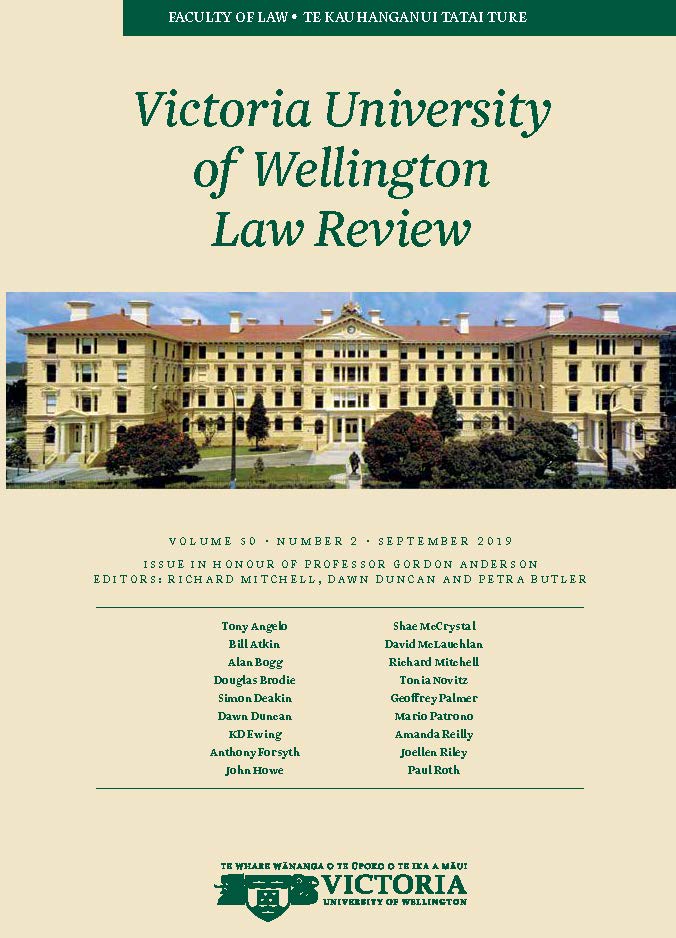Reaching Across the Ditch? Similarities and Differences in the Trajectory of Australian and New Zealand Regulation of Collective Labour Relations 1988–2018
DOI:
https://doi.org/10.26686/vuwlr.v50i2.5743Abstract
This article compares the development of the law and policy relating to collective aspects of labour relations in Australia and New Zealand over the last 30 years, taking account of historical, social, economic and political context. During that period, there have been many shifts and turns in the direction of regulation, although developments in each country have mostly responded to the broader rise of neo-liberalism in economic and social policy. In this article we examine the differing workplace reform agendas of Labor/Labour and Coalition/National governments in these two countries, alongside the competing policy objectives of these reforms (deregulatory versus protective), and assess the extent to which these reforms have encouraged, undermined, or reflected a position of "state neutrality" toward collective bargaining. In making this assessment, we reflect on similarities and differences in the trajectory of Australian and New Zealand regulation of collective labour relations, and the level of influence that developments in each country has had on the other.
Downloads
Downloads
Published
How to Cite
Issue
Section
License
Authors retain copyright in their work published in the Victoria University of Wellington Law Review.


